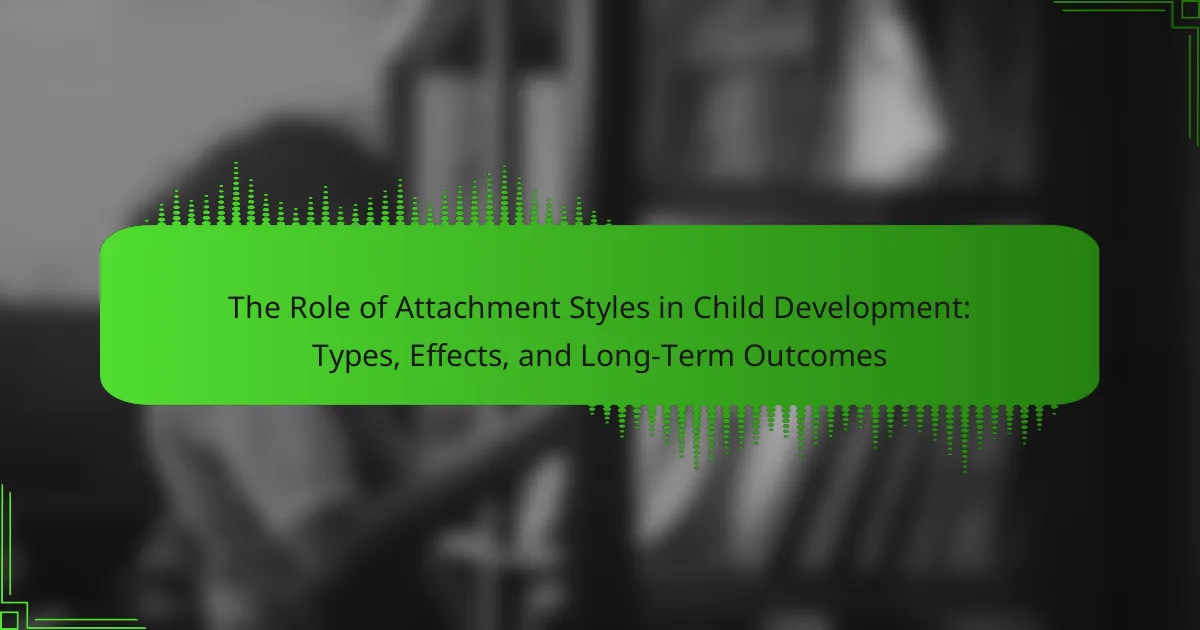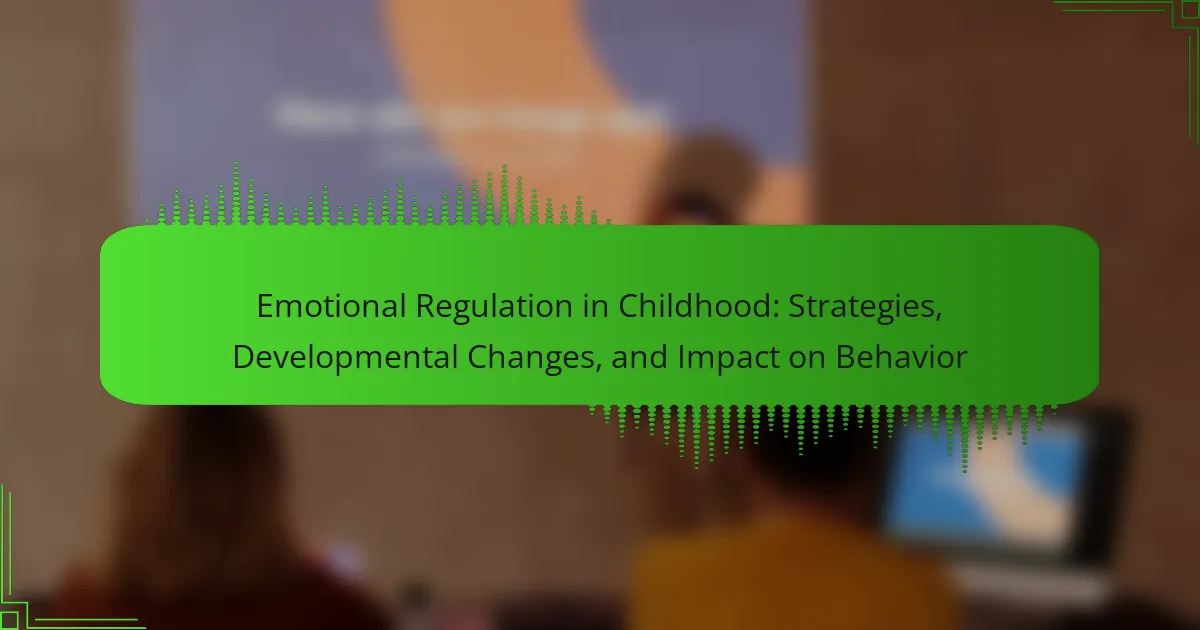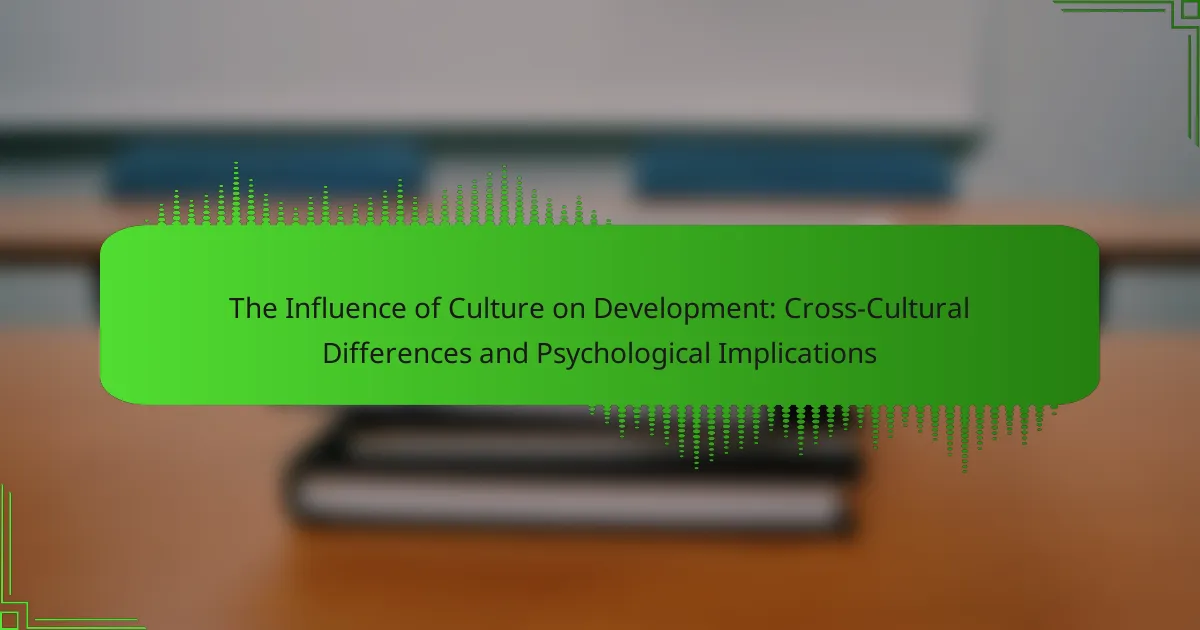Attachment styles are defined as patterns of behavior in relationships that develop during early childhood, primarily influenced by interactions with primary caregivers. This article explores the four main attachment styles—secure, anxious, avoidant, and disorganized—and their significant implications for a child’s emotional and social development. Secure attachment fosters healthy relationships and emotional regulation, while insecure attachments can lead to anxiety, emotional distance, and difficulties in intimacy. The article emphasizes the importance of responsive caregiving in promoting secure attachment and outlines the long-term effects of these styles on mental health and interpersonal relationships. Understanding these dynamics is crucial for parents and educators in supporting children’s developmental outcomes.
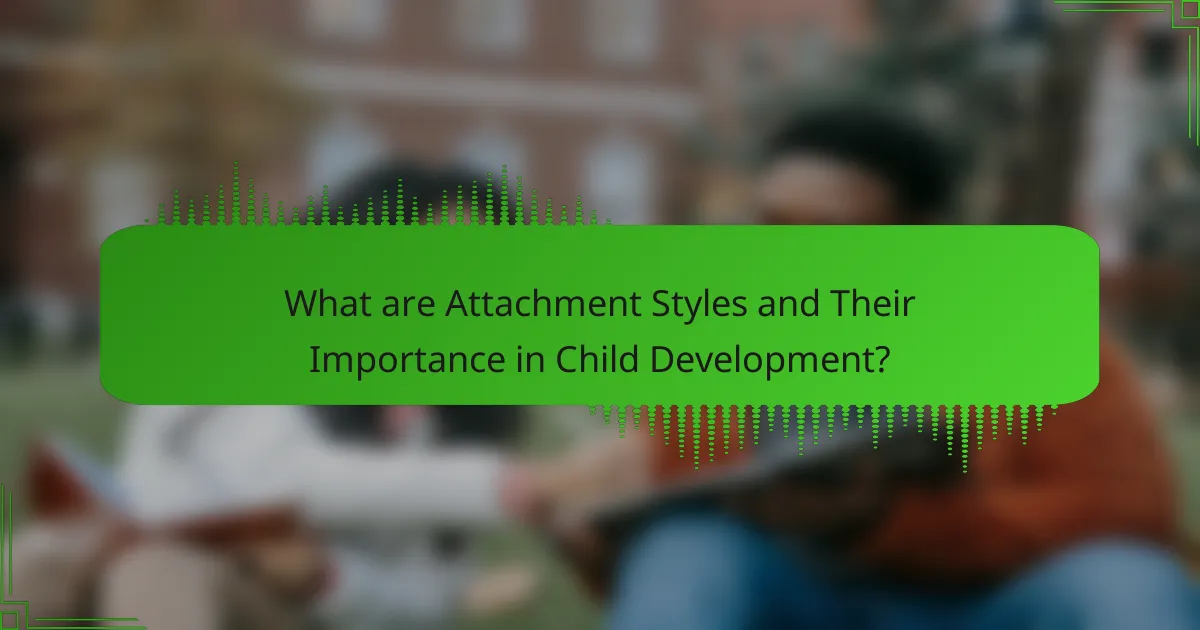
What are Attachment Styles and Their Importance in Child Development?
Attachment styles are patterns of behavior in relationships that develop during early childhood. They are formed through interactions with primary caregivers. Secure, anxious, avoidant, and disorganized are the four main attachment styles. Each style influences a child’s emotional and social development. Secure attachment promotes healthy relationships and emotional regulation. Anxious attachment can lead to dependency and anxiety in relationships. Avoidant attachment often results in emotional distance and difficulty in expressing feelings. Disorganized attachment may cause confusion and fear in relationships. Research shows that attachment styles significantly impact future interpersonal relationships and mental health outcomes. For instance, children with secure attachment often perform better academically and socially. Understanding attachment styles is crucial for parents and educators to support healthy development.
How do attachment styles form during early childhood?
Attachment styles form during early childhood through interactions between the child and their primary caregivers. These interactions are crucial for emotional development. Secure attachment develops when caregivers are responsive and consistent. In contrast, inconsistent or neglectful caregiving can lead to insecure attachment styles. Research shows that children with secure attachments tend to have better emotional regulation. They are more likely to explore their environment and develop healthy relationships later in life. Studies indicate that these early experiences shape the brain’s development, influencing future attachment behaviors. The foundational experiences in early childhood are pivotal in determining attachment styles.
What factors influence the development of attachment styles?
Attachment styles develop due to a combination of factors, primarily early relationships with caregivers. These relationships shape a child’s expectations of intimacy and security. Consistent, responsive caregiving fosters secure attachment. Conversely, inconsistent or neglectful caregiving can lead to insecure attachment styles. Environmental factors, such as parental mental health, also play a significant role. Cultural influences may affect attachment behaviors and expectations. Research indicates that children with secure attachments tend to develop healthier relationships in adulthood. Studies show that early experiences significantly impact emotional and social development throughout life.
How do caregivers’ behaviors affect attachment formation?
Caregivers’ behaviors significantly influence attachment formation in children. Responsive and sensitive caregiving fosters secure attachment. When caregivers consistently meet a child’s needs, the child feels safe and valued. This secure base encourages exploration and social development. Conversely, inconsistent or neglectful caregiving can lead to insecure attachment styles. Research indicates that children with secure attachments tend to have better emotional regulation and social skills. A study by Ainsworth et al. (1978) demonstrated that children who experienced responsive caregiving showed secure attachments during the Strange Situation experiment. This evidence underscores the critical role of caregiver behaviors in shaping attachment outcomes.
What are the different types of attachment styles?
There are four primary types of attachment styles: secure, anxious, avoidant, and disorganized. Secure attachment is characterized by comfort with intimacy and independence. Anxious attachment involves a preoccupation with relationships and fear of abandonment. Avoidant attachment reflects a reluctance to rely on others and a preference for emotional distance. Disorganized attachment combines elements of both anxious and avoidant styles, often resulting from inconsistent caregiving. Research by Mary Ainsworth in the Strange Situation experiment established these categories based on children’s responses to separation and reunion with caregivers.
What characterizes secure attachment?
Secure attachment is characterized by a strong emotional bond between a caregiver and a child. This bond fosters a sense of safety and trust. Children with secure attachment feel comfortable exploring their environment. They seek comfort from their caregiver when distressed. Securely attached children exhibit confidence in social interactions. They tend to have positive self-esteem and emotional regulation. Research indicates that secure attachment leads to healthier relationships in adulthood. Studies show that approximately 60-65% of children develop secure attachment styles.
What are the features of anxious attachment?
Anxious attachment is characterized by a preoccupation with relationships and fear of abandonment. Individuals with this attachment style often exhibit clinginess and dependency on their partners. They may experience heightened emotional responses to perceived threats in relationships. Anxiety about the stability of their connections is common.
These individuals often seek constant reassurance from their partners. They may misinterpret neutral or ambiguous cues as negative. Their self-esteem can be closely tied to their relationship status. Research indicates that anxious attachment can lead to difficulties in emotional regulation.
How does avoidant attachment manifest in children?
Avoidant attachment manifests in children through emotional distance and reluctance to seek comfort. These children often appear independent and self-reliant. They may avoid eye contact and show little interest in social interactions. When distressed, they tend not to seek help from caregivers. Instead, they may suppress their emotions and minimize their needs. Research indicates that these behaviors stem from early experiences with caregivers who are consistently unavailable or unresponsive. A study by Main and Solomon (1990) highlights that avoidant children develop coping mechanisms to protect themselves from rejection. This pattern can lead to difficulties in forming close relationships later in life.
What is disorganized attachment and its implications?
Disorganized attachment is a type of insecure attachment characterized by a lack of clear attachment behavior in children. Children with this attachment style may display contradictory behaviors, such as approaching a caregiver while simultaneously showing fear. This attachment style often arises from inconsistent or frightening caregiving experiences. It can lead to difficulties in emotional regulation and increased risk of mental health issues later in life. Research indicates that children with disorganized attachment may struggle with forming healthy relationships in adulthood. They may exhibit symptoms of anxiety, depression, and behavioral problems. The implications of disorganized attachment are significant, affecting both personal development and social functioning.
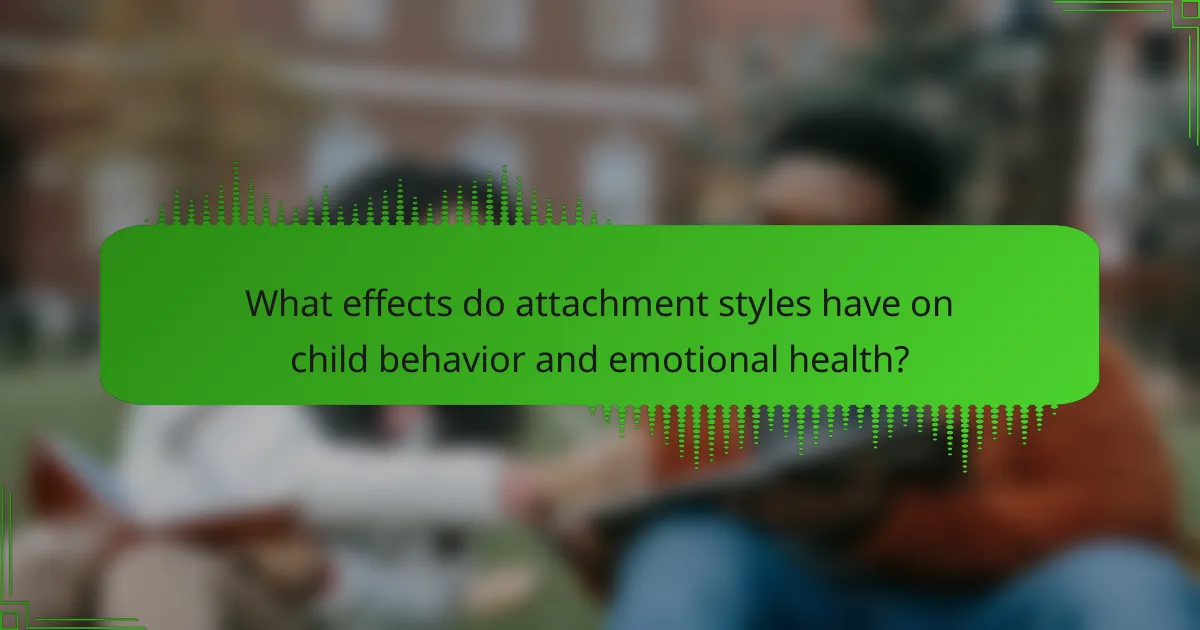
What effects do attachment styles have on child behavior and emotional health?
Attachment styles significantly influence child behavior and emotional health. Secure attachment fosters positive social interactions and emotional regulation. Children with secure attachment are more likely to exhibit confidence and resilience. In contrast, insecure attachment can lead to anxiety, aggression, and difficulties in relationships. Research indicates that children with avoidant attachment may struggle with intimacy and emotional expression. Anxious attachment is linked to heightened emotional distress and dependency on caregivers. Studies show that early attachment experiences shape brain development and stress response systems. For instance, a study by Groh et al. (2017) highlights the long-term effects of attachment on mental health outcomes.
How do attachment styles influence social interactions?
Attachment styles significantly influence social interactions. They shape how individuals relate to others and form relationships. Secure attachment typically leads to positive social interactions. Individuals with secure attachment are more likely to communicate openly and trust others. In contrast, anxious attachment can result in clinginess and fear of rejection. This may lead to heightened emotional responses in social situations. Avoidant attachment often results in social withdrawal and difficulty in forming close bonds. Research indicates that these styles affect conflict resolution and emotional regulation in relationships. A study by Mikulincer and Shaver (2007) found that secure individuals engage in more constructive communication. This highlights the importance of attachment in social dynamics.
What role do attachment styles play in peer relationships?
Attachment styles significantly influence peer relationships. They determine how individuals interact, communicate, and form connections with others. Secure attachment leads to positive peer interactions. Individuals with secure attachment are more likely to express emotions and seek support. In contrast, anxious attachment often results in clinginess or fear of rejection. This can create tension in peer relationships. Avoidant attachment may lead to emotional distance and difficulty in forming close bonds. Research shows that these attachment styles impact social competence and relationship satisfaction. A study by Mikulincer and Shaver (2007) highlights the correlation between attachment styles and interpersonal dynamics. Understanding these roles can improve social skills and peer relationships in children.
How can attachment styles affect emotional regulation in children?
Attachment styles significantly influence emotional regulation in children. Secure attachment fosters healthy emotional responses. Children with secure attachment tend to express emotions appropriately and manage stress effectively. In contrast, insecure attachment can lead to difficulties in emotional regulation. Anxious attachment may result in heightened emotional responses and difficulty calming down. Avoidant attachment often leads to emotional suppression and challenges in expressing feelings. Research indicates that children with secure attachment show better coping strategies during stressful situations. A study by Groh et al. (2017) found that secure attachment is linked to greater emotional competence. This demonstrates the critical role of attachment styles in shaping emotional regulation in children.
What are the long-term outcomes associated with different attachment styles?
Long-term outcomes associated with different attachment styles significantly impact emotional and relational health. Secure attachment often leads to healthier relationships and better emotional regulation. Individuals with secure attachment tend to have higher self-esteem and greater life satisfaction. In contrast, anxious attachment can result in relationship anxiety and dependency. Those with avoidant attachment may struggle with intimacy and have difficulty expressing emotions. Disorganized attachment often correlates with increased risk of mental health issues. Research indicates that early attachment experiences shape [censured] interpersonal dynamics. Studies show that secure attachments in childhood predict positive [censured] outcomes (Bowlby, 1982; Ainsworth, 1978).
How do attachment styles impact [censured] relationships?
Attachment styles significantly influence [censured] relationships. They shape how individuals connect, communicate, and respond to intimacy. Secure attachment leads to healthy, trusting relationships. Individuals with secure attachment are more likely to express emotions and seek support. In contrast, anxious attachment can result in clinginess and fear of abandonment. Those with anxious styles may overly seek reassurance from partners. Avoidant attachment often leads to emotional distance and difficulty with intimacy. Individuals with avoidant styles may prioritize independence over connection. Research indicates that attachment styles formed in childhood persist into adulthood. Studies show that secure attachment correlates with higher relationship satisfaction and stability.
What connections exist between attachment styles and mental health issues?
Attachment styles significantly influence mental health issues. Secure attachment often leads to better emotional regulation. In contrast, insecure attachment styles, such as anxious or avoidant, are linked to higher rates of anxiety and depression. Research indicates that individuals with insecure attachment are more prone to developing personality disorders. A study by Mikulincer and Shaver (2016) found that insecure attachment predicts increased vulnerability to mental health challenges. The correlation between attachment styles and mental health is evident in various psychological assessments. Insecure attachment can hinder interpersonal relationships, further exacerbating mental health problems.

How can caregivers promote healthy attachment styles?
Caregivers can promote healthy attachment styles by consistently responding to a child’s needs. This involves being emotionally available and sensitive to the child’s signals. Regularly engaging in nurturing behaviors fosters security and trust. Additionally, caregivers should provide a stable environment that encourages exploration. This balance of support and independence is crucial for healthy attachment. Research indicates that responsive caregiving leads to secure attachment outcomes. For instance, a study by Ainsworth et al. (1978) demonstrated that sensitive parenting correlates with secure attachment in infants. Thus, caregivers play a vital role in shaping attachment styles through their interactions.
What strategies can parents use to foster secure attachment?
Parents can foster secure attachment by consistently responding to their child’s needs. This involves being emotionally available and attentive. Regular physical affection, such as hugs and cuddles, promotes a sense of safety. Engaging in meaningful eye contact during interactions enhances emotional connection. Communicating openly and sensitively builds trust. Encouraging exploration while providing a secure base helps children feel safe. Parents should also model healthy emotional expression. Research shows that secure attachment leads to better emotional regulation and social skills in children.
How does responsive parenting contribute to secure attachment?
Responsive parenting fosters secure attachment by consistently meeting a child’s emotional and physical needs. This consistency helps children feel safe and understood. When caregivers respond promptly to a child’s signals, it builds trust. Trust is a foundational element of secure attachment. Research indicates that children with responsive parents are more likely to develop healthy emotional regulation. Additionally, these children exhibit greater social competence and resilience. A study by Ainsworth et al. (1978) demonstrated that secure attachments lead to positive developmental outcomes. Thus, responsive parenting directly contributes to the formation of secure attachment.
What practices can help avoid insecure attachment styles?
Consistent emotional availability from caregivers can help avoid insecure attachment styles. Caregivers should respond promptly and sensitively to a child’s needs. This fosters a sense of security and trust. Engaging in positive, nurturing interactions builds strong emotional bonds. Providing a stable environment reinforces predictability and safety for the child. Encouraging open communication allows children to express their feelings. Teaching emotional regulation skills helps children manage their emotions effectively. Research indicates that secure attachments lead to healthier relationships in adulthood.
What resources are available for understanding attachment styles?
Books, articles, and online courses are available for understanding attachment styles. Key books include “Attached” by Amir Levine and Rachel Heller, which explains attachment theory. “The Body Keeps the Score” by Bessel van der Kolk also discusses the impact of attachment on mental health. Academic articles in journals like “Attachment & Human Development” provide research insights. Online platforms like Coursera and Udemy offer courses on attachment styles and relationships. Websites such as the American Psychological Association provide resources and articles on this topic. These resources collectively enhance understanding of attachment styles and their implications.
Which books or articles provide insights on attachment theory?
“Attached: The New Science of [censured] Attachment” by Amir Levine and Rachel Heller offers comprehensive insights on attachment theory. “The Attachment Theory: A Very Short Introduction” by Nick Midgley provides a succinct overview of key concepts. “A Secure Base: Parent-Child Attachment and Healthy Human Development” by John Bowlby is foundational in the field, detailing the origins of attachment theory. “The Science of [censured] Attachment: A Psychological Perspective” by Mario Mikulincer and Phillip R. Shaver explores [censured] attachment dynamics. Articles in journals like “Attachment & Human Development” provide ongoing research and current findings in the field.
How can professional support assist in developing healthy attachment in children?
Professional support can assist in developing healthy attachment in children by providing guidance and interventions. Therapists and counselors can educate caregivers about attachment theory. They can teach strategies to respond sensitively to a child’s needs. These professionals also help identify and address attachment-related issues. Evidence shows that secure attachment leads to better emotional regulation. Research indicates that positive caregiver interactions promote healthy attachment. Consistent support fosters trust and security in children. This ultimately enhances their social and emotional development.
What are the best practices for nurturing attachment in children?
Establishing consistent routines is crucial for nurturing attachment in children. Predictable schedules help children feel secure and understand their environment. Responsive parenting also plays a vital role. Parents should promptly respond to their child’s needs, fostering trust and safety. Physical affection, such as hugs and cuddling, reinforces emotional bonds. Engaging in play promotes positive interactions and strengthens connections. Active listening to children encourages open communication and validates their feelings. Creating a safe space for expression allows children to share thoughts freely. Lastly, spending quality time together enhances emotional availability and attachment security.
The main entity of this article is attachment styles, which are patterns of behavior in relationships formed during early childhood through interactions with primary caregivers. The article explores the four primary attachment styles—secure, anxious, avoidant, and disorganized—and their significant impact on a child’s emotional and social development. It discusses how these styles influence behavior, emotional regulation, and long-term outcomes in adulthood, including mental health and relationship dynamics. Additionally, the article outlines factors that contribute to the formation of attachment styles and offers strategies for caregivers to promote healthy attachments in children.
